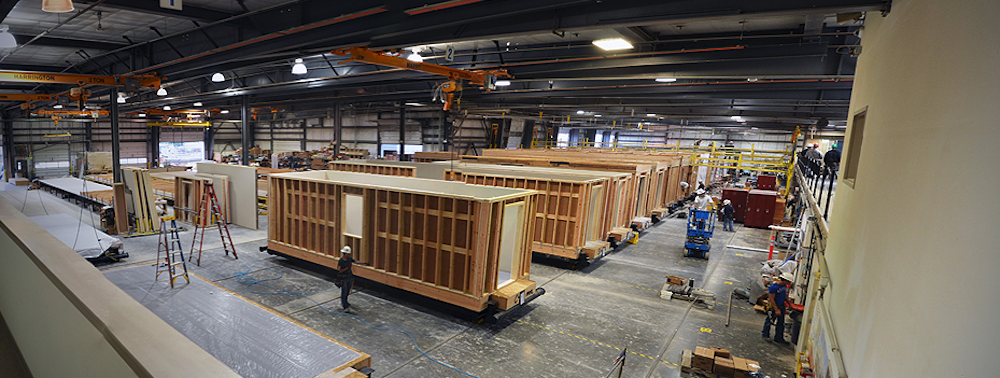by Gary Fleisher
Looking closer at offsite home construction, a striking difference emerges when we look at the number of factories per company dedicated to HUD (Housing and Urban Development) manufactured homes compared to the number of individual factories per modular home manufacturer.

All photos – Skyline Champion Homes
This disparity isn’t random but deeply rooted in various factors such as market demand, regulatory frameworks, manufacturing techniques, and the core business strategies of these entities. Here are some of the most telling differences behind this phenomenon.
The Demand-Driven Dynamics
HUD Manufactured Homes: These homes serve a vital role in the affordable housing sector. Their appeal spans diverse regions, particularly benefiting rural and suburban populations. The demand for cost-effective living solutions propels the existence of numerous factories, aimed at mass-producing homes that adhere to the federal HUD Code. This standardization across the board enables a streamlined, efficient manufacturing process capable of catering to a wide audience.
Modular Homes: Tailored to meet local building regulations, modular homes present a more personalized housing solution. Their construction adapts to individual preferences and stringent local codes, naturally leading to a more concentrated operation. Such customization demands mean modular home companies might not sprawl as widely as their HUD counterparts, focusing instead on regional specificity and detailed craftsmanship.
Navigating Through Regulatory Landscapes
The regulatory environment plays a pivotal role in shaping the factory footprint of these two housing sectors. HUD-manufactured homes enjoy the simplicity of a unified federal standard, allowing them to multiply their manufacturing bases without the complication of varying local codes. Modular homes, however, dance to the tune of local regulations, which can significantly vary and affect the scalability of operations, hence influencing the number and spread of factories.

.
The Manufacturing Conundrum
When it comes to manufacturing, the two types of homes couldn’t be more different. Manufactured homes benefit from high-volume, standardized production processes, making it feasible to operate several factories at once. On the flip side, modular homes thrive on customization, necessitating a detailed and often complex manufacturing process that doesn’t easily lend itself to widespread, uniform production.
Business Models and Strategic Investments
The underlying business strategies also explain the factory disparity. Manufactured home companies typically invest in multiple facilities to leverage economies of scale, aiming to blanket a broader market segment with affordable options. Modular home businesses, however, often invest in fewer, strategically located factories. Their focus is on quality, customization, and meeting specific regional demands, which dictates a different investment approach, prioritizing depth over breadth.
The Logistics of Building and Shipping
Finally, the logistical challenges associated with transporting these homes play a crucial role. Manufactured homes, designed for direct transit to their destination, align with a business model that supports numerous factories across various locations. This strategy minimizes transportation costs and broadens the market reach. Modular homes, comprising several sections for on-site assembly, face more complex logistical hurdles. This aspect influences the strategic placement of factories, often resulting in fewer but more strategically located manufacturing sites to efficiently serve their target markets.
The notable difference in factory numbers between HUD-manufactured and modular home companies stems from distinct market focuses, regulatory adherence, production methodologies, and logistical frameworks. While manufactured homes are primed for mass production and widespread distribution, modular homes cater to a niche that values customization and local building compliance. This divergence reflects the broader dynamics of the housing industry, highlighting how different approaches to homebuilding meet the diverse needs and preferences of today’s homeowners.
.
Gary Fleisher is a renowned blogger, consultant, and commentator on construction and housing trends, known for his insightful analysis of the industry.



